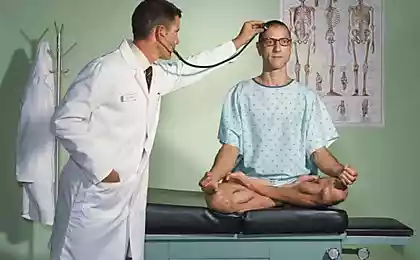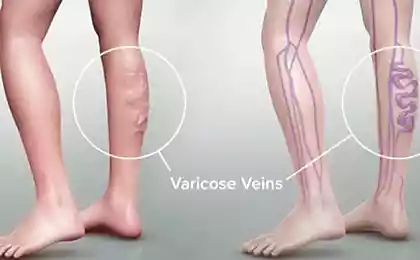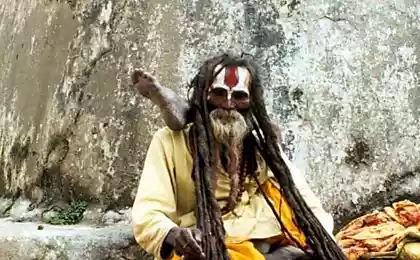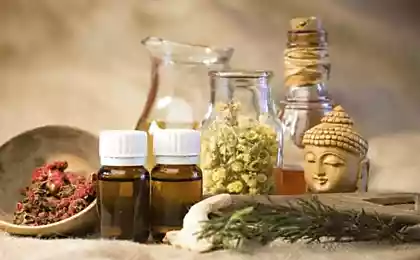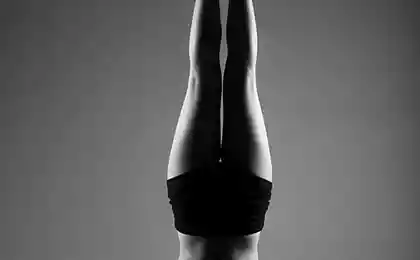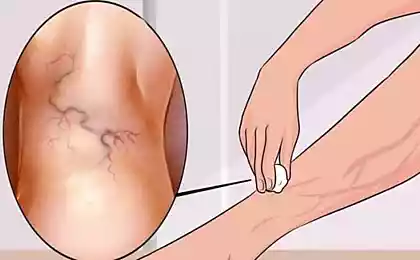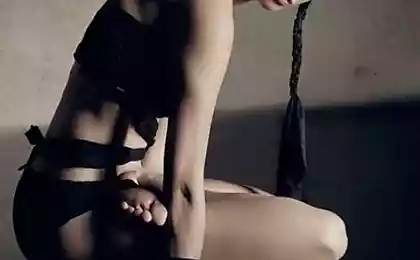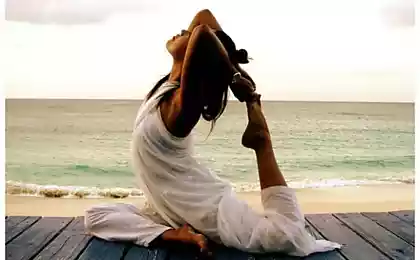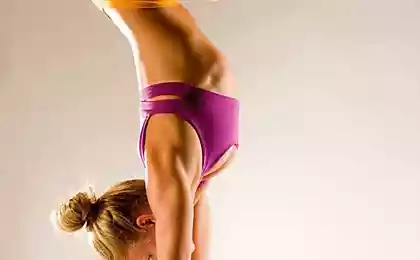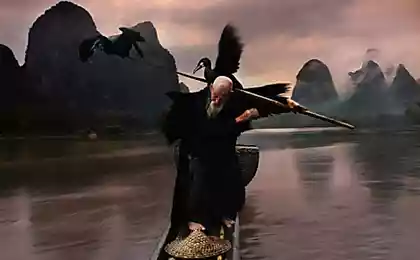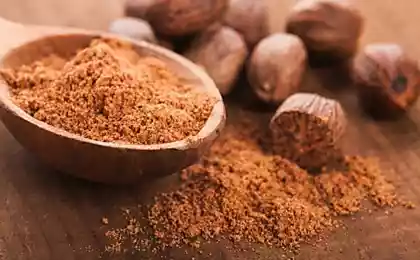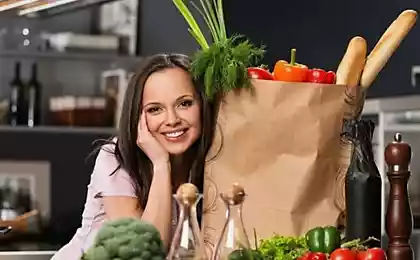491
Yoga therapy of varicose veins

In our circulatory system all vessels arranged in something of the same, but something quite different. Combines all the vessels of the fact that the vascular wall contains three layers: outer connective tissue separating the vessel from surrounding tissue and provides elasticity to the vessel; the average, the muscle that allows the vessel to constrict and relax, changing its tone and diameter, and inner endothelium, which plays an important role in permeability of the vascular wall and its interaction with blood cells.
The vessels throughout the vascular bed change their properties and structure, adjusting to the performance of those tasks which are assigned to them at this stage.
The large vessels – aorta and its major branches – the first to receive the brunt of the blood ejected from the left ventricle and should have a high elasticity, i.e. the ability to return to its original shape after stretching. Therefore they are called as elastic vessels. They have the most developed outer, connective tissue layer.
Smaller arteries (arterioles) have a very developed middle, muscular layer and therefore is able to greatly compressed, providing resistance to blood flow. Due to this quality they are called resistance vessels. These strong small arteries contribute to the formation of systemic blood pressure; they can also limit the entrance of blood in capillaries, reducing blood flow in tissues. Small resistance vessels is one of the targets of the practice of pranayama: when breathing delays in the blood increases the level of carbon dioxide, having a relaxing effect on the small arteries, and thus increases the level of capillary blood flow
Further, the small arteries go into the exchange vessels. The name given to the capillaries, as in them there are processes of gas exchange between blood and tissues. In order that the gases moved through the vascular wall as quickly as possible, nature has made the capillaries are single layer, no outer muscle layers; the capillary wall consists of single endothelial layer easily transmits gases and other substances. In addition, in the thin capillary wall has Fenestra – holes through which immune cells can migrate from blood into tissues and back.And finally, after capillary begins the next functional class of vessels called bulk. This first small veins, which are the capillaries; further, more and more wcreplays, the veins come to the heart and empties into right atrium – thus venous blood again enters the process of circulation and sent to the lungs to be enriched with oxygen and to give the atmosphere of carbon dioxide.
Why veins are called volume vessels? The fact that in the veins contains the main volume of blood – about 70% of the circulating blood simultaneously is located in the venous line. Veins play the role of a depot, storage of blood. This is necessary in case if in some organs and tissues need increased blood supply -for example, during exercise blood flow is redistributed in favor of the muscles, bleeding body to strive to maintain adequate blood flow to vital organs – brain, heart, kidneys. To do this, the tone of veins and increasing of the blood, "vidalias" of veins, moves to other departments of the vascular bed.
To perform its storage functions of blood veins have a high ability to stretch. But it is this feature and makes the veins weak link of the vascular system. Multiple cropping in the end can lead to the fact that the venous wall pererastayut, deformed and eventually it occurs varicose.
Varicose disease (WB) is a General weakness of venous walls, and this phenomenon can take place in different areas of the body, in fact as a result of the same problem. It could be varicose veins of the lower extremities, pelvic organs, venous weakness can manifest itself on the level of violations of the outflow from the cranial cavity; finally, hemorrhoids is also abnormal enlargement of the venous plexus surrounding the rectum.
Currently, many reputable researchers believe that the world Bank played a dominant role genetic characteristics of connective tissue that is part of the venous wall. The basis is the reduction of the connective tissue of certain types of collagen or breaking the relationships between them (M. Ya. Yakovlev, 1994), which leads to excessive expansion and insufficient strength of the venous wall. In addition, the huge importance of predisposing factors, greatly accelerates the development of the disease:
- the nature and conditions of work: long stay in a standing or sitting position dramatically strengthens the processes of venous stasis.
- pregnancy and childbirth: the increase of the uterus increases pressure in the abdominal cavity, which leads to compression of the veins and deterioration of the venous outflow from lower limbs, pelvic and abdominal cavity.
- similar effects have constipation, increasing pressure in the abdominal cavity.
- lack of regular physical activity.
- We should stay on the WB of the pelvic organs in women. Here, apart from pregnancies and childbirth, of great importance are also the methods of contraception (an intrauterine spiral, interrupted sexual intercourse and lack of orgasms have a negative impact on the venous circulation of the pelvis). In addition, menstrual irregularities and hyperestrogenia adversely interfere in the regulation of vascular tone of venous (V. G. Moses, G. A. Ushakova, 2006). Stimulates the development of the world Bank and the weakness of the pelvic floor muscles.
After that we formed the structural changes of the components of the vascular wall and the irreversible formation of varices. Hypoxia of the venous wall caused by stagnation of blood in the lumen of the vessel, damages the endothelium and leads to restructuring of all components of the vascular wall (Hajiyev T. A., 1986).
Before proceeding to a consideration of the techniques of yoga therapy, think about the mechanisms that improve venous outflow and prevent the development of varicose veins.
What makes blood move to the heart, especially of the legs and pelvis – because in this case blood has to overcome the force of gravity? It is clear that the valve device prevents blood from moving backwards, but what makes it go to the heart?
Mechanisms of venous return several. The first is the muscle pump (especially lower extremities). Every time we take a step, the muscles of legs and thighs are reduced, the veins located in their thicker, compressed and the blood is pushed upwards in the course of the valve, i.e. towards the heart.
The second mechanism of venous return – suction action of the thorax on inspiration. During inhalation, the pressure in the thorax decreases, which leads to the entrainment of blood in the large veins located near the heart, thereby improving the return of blood to the heart from the peripheral veins. This mechanism is enhanced by the use of techniques of ujjayi on inhale, because this technique contributes to an even greater drop in pressure in the thorax during inhalation.
When you build a "protivovirusnogo" yogaterapiya algorithm should exclude techniques that exacerbate venous congestion and limiting the normal mechanisms of venous return. Limited to standing asanas with long fixations, as switching the muscle pump of the lower limbs. Undesirable performing standing postures with fixing more than 10 seconds. By itself, a standing practice will be very useful, but without long fixations, that is of diverse variations based on Surya Namaskar with any standing postures in dynamic mode with a very short fixations. This approach will enhance the muscle pump of the lower extremities and will not block it.
Also limited to performing sedentary postures, restricting the blood flow in the veins of the lower extremities (Virasana, Padmasana, Vajrasana, gomukhasana and the like).
Found yogaterapiya approach, applying these asanas, but in this case, you should use them only with short fixations (no more than 20-30 seconds) and alternating with inverted asanas that are performed for 30-60 seconds or more. For example, this sequence: Vajrasana (15 seconds) viparita karani mudra (60 seconds) – Virasana (15 seconds) – Sarvangasana (60 seconds) – Vajrasana (15 seconds) – sirsasana (60 seconds or more). It is assumed that a short restriction of venous blood flow in sitting posture slightly stretches the muscle elements of the vascular wall, which causes a reciprocal increase in their tone, after which you can inverted position, promotes active blood flow and volume unloading of the veins. However, this approach in practice is quite cumbersome and only possible in individual work.
Also excluded from the practice of fixing in the asanas, which significantly increases pressure in the abdominal cavity – in the first place Ardha of navasana and the like. To execute the asanas for the stomach muscles should only in dynamic mode, it is good to combine them with ujjayi on inhale, additionally improving venous return due to the work of breathing. It should also be remembered that the number of deep depressions on the abdomen (such as dhanurasana, salabhasana) also greatly increase intra-abdominal pressure (Bhole, Karambelkar, 1971).
Now you need to enable the practice of techniques that are beneficial to the processes of the venous outflow.
Unloading veins of the lower extremities and pelvis contribute to inverted asanas. For the venous and lymphatic system of the legs work well combination of inverted positions with the dynamic movements of the feet (rotation, flexion-extension at the ankle joint), perform Uddiyana-bandhs in the inverted asanas. On the venous system of the pelvis are beneficial twisting variations inverted asanas such as Sarvangasana, Parsva and the like.
Abdominal manipulation (Uddiyana-Bandha and Nauli) are powerful vacuum techniques, creating a negative pressure in the cavities of the body and therefore increasing venous return. The most powerful vacuum equipment is madhyama-Nauli.
It is important to use breathing techniques in a specific mode, aimed at improving venous return. To enhance the suction action of the breath should be put into practice the complete breath (with a preliminary study of the articular and muscular apparatus of the chest, read more here artem-frolov.spb.ru/articels/physiology/458 ) and to master the technique of ujjayi breathing. The use of full breath and ujjayi on inhale can be used effectively in the simplest exercises for beginners and older people with concomitant diseases: from position tadasana to breath ujjayi is performed and raise the hands (on the suction action of the thorax on inspiration) and simultaneously stand on your toes (on the muscle pump of the lower limbs), exhale without ujjayi, down on the heels, hands down. Another example for a more trained person with a WB of the pelvic organs: on the inhale with ujjayi included in urdhva Mukha of svanasana, on the exhale without ujjayi transition into Adho Mukha of svanasana, at the end of exhalation, Uddiyana-Bandha (for the unloading of the venous system of the pelvis, the pelvic area is above the heart; the venous outflow is facilitated and due to gravity, and through the vacuum action of Uddiyana-bandhs). Performing Uddiyana-bandhs in Adho Mukha of svanasana to unload the veins of the pelvis can be performed multiple times throughout the complex.
Thus, therapeutic yoga practice with varicose veins has a predominantly dynamic character with many standing postures, but with the minimum time necessary. Widely used abdominal manipulations, including those carried out in different embodiments, the inverted asanas (Adho Mukha of svanasana, viparita karani wise, etc.). throughout the classes can be used on the ujjayi breath, ujjayi on exhale is not used or is used in the soft option. Sitting position to perform breathing and meditation practices are selected so as not to suffer venous outflow, i.e., without cross-clamping of the legs using a pillow, brick or chair. In the respiratory proportions preferred variant of sama Vritti
In addition to proper construction practices, you should pay attention to General mode of life and work. If the work involves prolonged stay in a standing or sitting position, it is no less than 1 time in 45-60 minutes you should get up and walk up and down the stairs to enhance the muscle pump. Should avoid staying in hot rooms, baths, saunas, hot tub, on the beach under the hot sun (in such circumstances, the vessels dilate, and first expanded veins). When the WB of the lower limbs is very useful contrast shower on legs. Of sports are most suitable skiing and swimming.
An important complementary method is to use plants that increase the tone of veins (horse chestnut, leaf of hazel, agrimony pharmacy, Gotu Kola), strengthen the vascular wall due to the content of rutin and vitamin C (Ruta fragrant, black currant leaves, fruits are red ash) and improve blood flow and lower blood clotting (Melilotus officinalis, meadowsweet, leaf and branches of a raspberry) that stimulates the regeneration of connective tissue (couch grass, pulmonaria officinalis, horsetail).
Example "protivovirusnogo" collection:
The flowers of horse chestnut 2 the Fruits of chestnut Sheet 2 of 2 hazel Agrimony pharmacy 2 1 Ruta fragrant black currant leaves 3 Fruits red Rowan 2 1 Melilotus officinalis Meadowsweet 2 Pulmonaria officinalis 2 Mix. Grind. 1 tbsp. l. collection to 0.5 liters of boiling water, cook for 3 minutes, to insist 30 minutes. drain. To drink during the day in small portions.
To use the fee rates for 1 – 1.5 months 2-3 times a year.
Varicose veins – a disease responsive to the practice of yoga therapy. And well-designed classes, as a rule, give very good results. Of course, to recover has already been modified by the structure of the vascular wall is impossible. But the practice of yoga therapy allows you to stop the further progression of the process; in addition, it is possible to significantly improve the quality of life and leave the pain in the legs and in the pelvic region, swelling disappear. The key to success is proper construction and regularity of practice.
Author: Artem Frolov
published
P. S. And remember, just changing your mind — together we change the world! ©
Source: www.all-yoga.ru/page/jogaterapija-varikoznoj-bolezni
